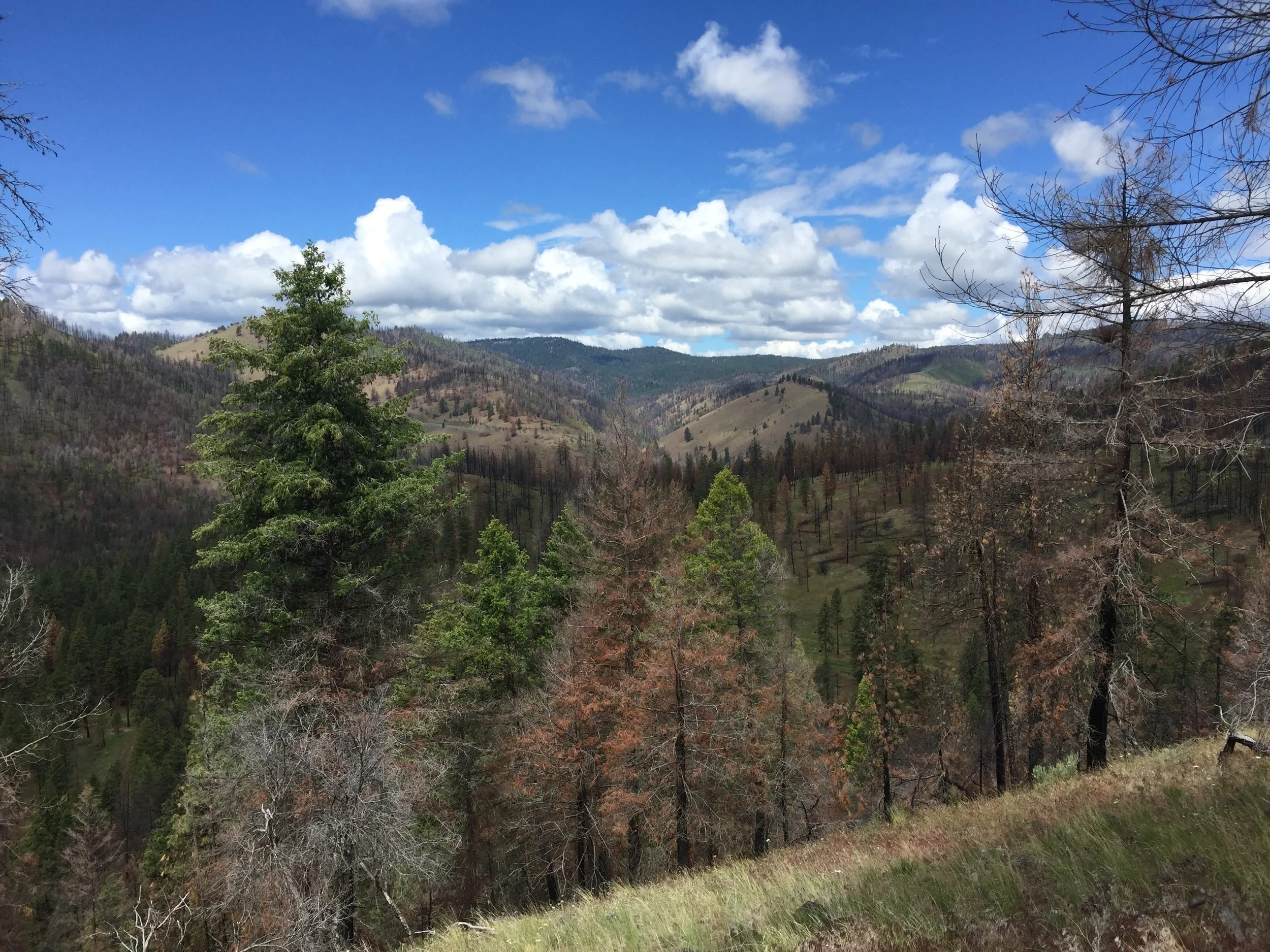Research Shows Thinning is Restoration in Eastern Oregon Forests
The region is facing a climate crisis. With catastrophic wildfires, extreme drought, and record-breaking heat, we know that climate change is here – and we also know that there are actions we can take to improve forest health and protect communities, helping them become more resilient to climate extremes.
Recently, acclaimed scientist James Johnston at Oregon State University published findings that significantly advance our understanding of how to improve both forest and climate health. His findings show that mechanical thinning in Eastern Oregon’s forests is a vital tool in restoring the health and resiliency of these seasonally dry forests.
As Johnston told the Capital Press newspaper recently, “These forest restoration treatments work. We are creating better outcomes for old-growth trees and native biodiversity by these selective thinning operations in dry forests of Eastern Oregon.”
Johnston’s research is just the latest in a long line of reputable, peer-reviewed research showing that in Eastern Oregon, forest health is suffering. The causes include overgrazing; a century of putting out every fire regardless of location or size; and unsustainable logging of large, fire-resistant Ponderosa pine trees. To rebuild forest health – and thus make it more resilient to wildfire, and also provide sustainable jobs, wood products, wildlife habitat, and water – mechanical thinning will be necessary.
In other words, we will have to remove trees to restore forest health. The key is to remove the smaller trees and the species that are more fire prone, and leave the larger trees and the species that are fire resistant – specifically the large Ponderosa pines.
The Malheur National Forest: A Priority Landscape for Restoration
The Malheur National Forest, situated in the southern Blue Mountains of Eastern Oregon, is one of 23 "priority landscapes" identified by the U.S. Forest Service for accelerated restoration under the Collaborative Forest Landscape Restoration Program (CFLRP). For the past decade, a dedicated team of scientists led by Johnston has been conducting research in the Malheur National Forest. Their mission: to understand the environmental effects of mechanical thinning.
The study focused on a specific thinning project, part of the Marshall Devine Hazardous Fuel Reduction Project, where thousands of acres were treated between late 2014 and early 2015. Johnston's team discovered that selectively cutting down younger trees led to significant positive outcomes:
Greater Biodiversity: Thinning the forest allowed more water and sunlight to reach the forest floor, benefiting hundreds of species of forbs and grasses – in particular wildflowers.
Enhanced Forest Resilience: The older, larger ponderosa pines, left standing after thinning, became more fire-resilient and better equipped to fend off insects, disease, drought, and fire. This is likely due to less competition for water and nutrients.
The Takeaway
At Sustainable Northwest, when we think about the future forests we want to see, we think about how to encourage thinning projects like this. We support collaboratives working throughout Oregon and Washington who are coming together to restore forests – like the Blue Mountains Forest Partners who participated in Johnston’s study.
We also help connect people doing good forest restoration work with markets to buy the wood products coming off the forests. The amount of restoration work that needs to be done is monumental – and it can provide billions of board feet of timber needed for green building projects and to help solve the housing crisis. One example is the PDX Next project at Portland airport, where Sustainable Northwest helped connect over a dozen small private and Tribal forest landowners to builders creating the airport’s new oak floor, decorative wood ceiling, and mass timber roof – currently the largest mass timber roof in the nation, all from sustainably managed forests. Or a similar example is OSU’s new Edward J. Ray Hall building in Bend.
Just like in the Malheur, we know that when restoring our forests to health, forest managers will also produce timber and other marketable wood products. These wood products can support small businesses and local economies, while also supporting healthy forests, clean air, carbon storage, fish and wildlife habitat, recreation, and cultural benefits.
We can have it all if we balance the needs of nature, people, and local economies.

